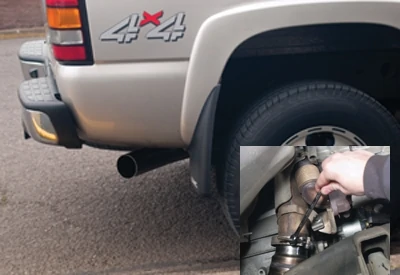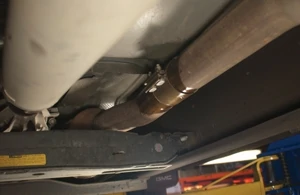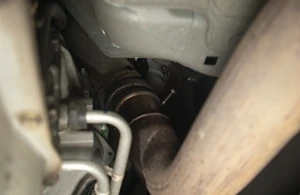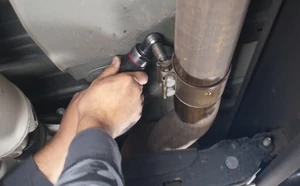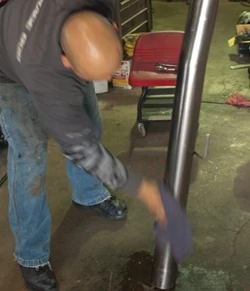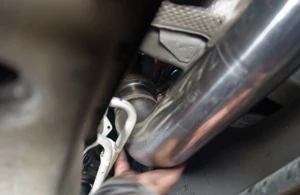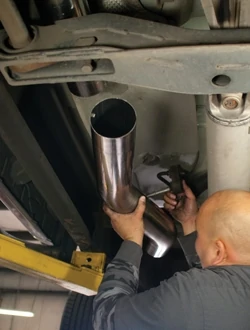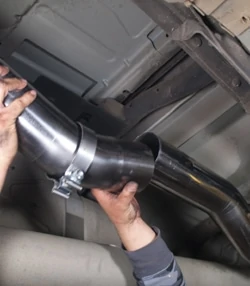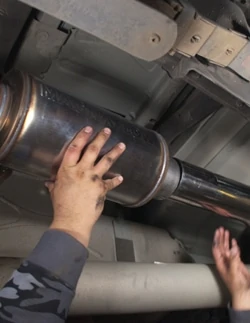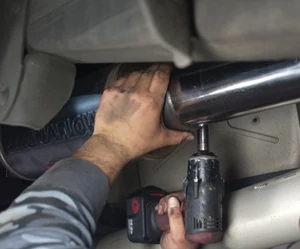By Tim Walton
We’ve all heard that impressive, at least to motorheads, roar of a loud diesel exhaust. There’s no doubt that this type of pipe offers plenty of air flow, but your neighbors may not appreciate such an exhaust system if they hear it every day.
Recently my uncle bought a pickup where the previous owner had shortened the exhaust just past the cab. It sounded cool for a couple days, but the novelty soon wore off. I installed a Magnaflow exhaust system on his Power-Stroke-powered Ford, and instantly it became a favorite of mine for the sound quality and dyno-proven performance.
Magnaflow builds their exhaust systems to run quietly enough at idle and cruise to let you enjoy conversations and music. But step on it and it comes to life with a healthy exhaust note that indicates the entire system is breathing easier and freeing up power.
For improved breathing on a 2006 GMC Sierra Duramax, we chose Magnaflow’s Pro Performance system, which features a satin finish, 100-percent stainless steel muffler with stainless steel band clamps and mandrel-bent stainless steel tubing. MagnaFlow says their mufflers are “100 percent stainless steel and lap-joint welded for solid construction and rugged reliability, even in the most extreme conditions.” They feature a free-flowing, straight-through perforated stainless steel core, stainless mesh wrap and acoustical fiber fill to deliver that smooth, deep tone.
We opted not to add a polished stainless tip to this work truck, however Magnaflow has optional tips in a variety of styles to customize the look of your exhaust system.
Exhaust systems, like the one featured here, can free up some horsepower by themselves. However, when used in conjunction with other modifications,
such as improved air-intake flow and an engine programmer, they can really shine.
Step by Step
Applying a quality penetrating oil to the bolts and fasteners can help break them loose.
Starting at the front of the pickup, we loosened and removed the V-band clamp, which connects the exhaust near the engine.
Removing the clamps at the next connection helped in the removal process.
Slide the clamp to one side to separate the front section from the back section of exhaust.
With a little lubrication a pry bar can be handy to remove the rubber hangers. Be sure to keep the hangers for re-use.
The layout of the exhaust can make it a challenge to remove without dropping a portion of the lower subframe. This is when a reciprocating saw can come in handy to make more manageable chunks of the exhaust.
The catalytic converter was easier to remove once we’d made our own cut in the exhaust.
James McCoy, head mechanic and owner of Garage 808, likes to remove any oil that may coat a new exhaust system. He uses some brake cleaner and a rag to remove it.
We started with the downpipe at the front of the exhaust system. Re-using the stock V-band clamp, we installed the replacement piece from Magnaflow. You can work front to back assembling the pipes, but leave all connections loose until final fitment.
Re-use the rubber exhaust hangers as you piece together the system. The exhaust system will hang in place until you tighten it and make final adjustments.
The Magnaflow system uses slip joints with clamps to hold them in place and seal them from leaking. Sliding the clamps over the exhaust before installing can help speed up the operation.
The Magnaflow muffler gives the exhaust system a nice note while keeping it quiet during idle and cruising.
Pay attention to the orientation of the pipes to make sure they clear suspension components like the shock seen here. Note: If the suspension is unloaded on a lift, it may be in a different location with the truck on the ground.
Make sure to torque the bigger clamps (not the hanger-type) to the recommended 65 lbs/ft to ensure a good seal and to hold the exhaust in place once you have proper alignment.
Double-check that there is at least a half an inch of clearance between the exhaust and other truck parts like the body, suspension and under-carriage. You can rotate the pieces of the exhaust to gain the needed clearance.
Re-torque the clamps after 25-50 miles of driving to make sure nothing has loosened.
The Magnaflow downpipe back exhaust will let your engine breath better and free up power. Since we decided not to add a polished or chrome tip, the system is understated and won’t draw too much attention.
